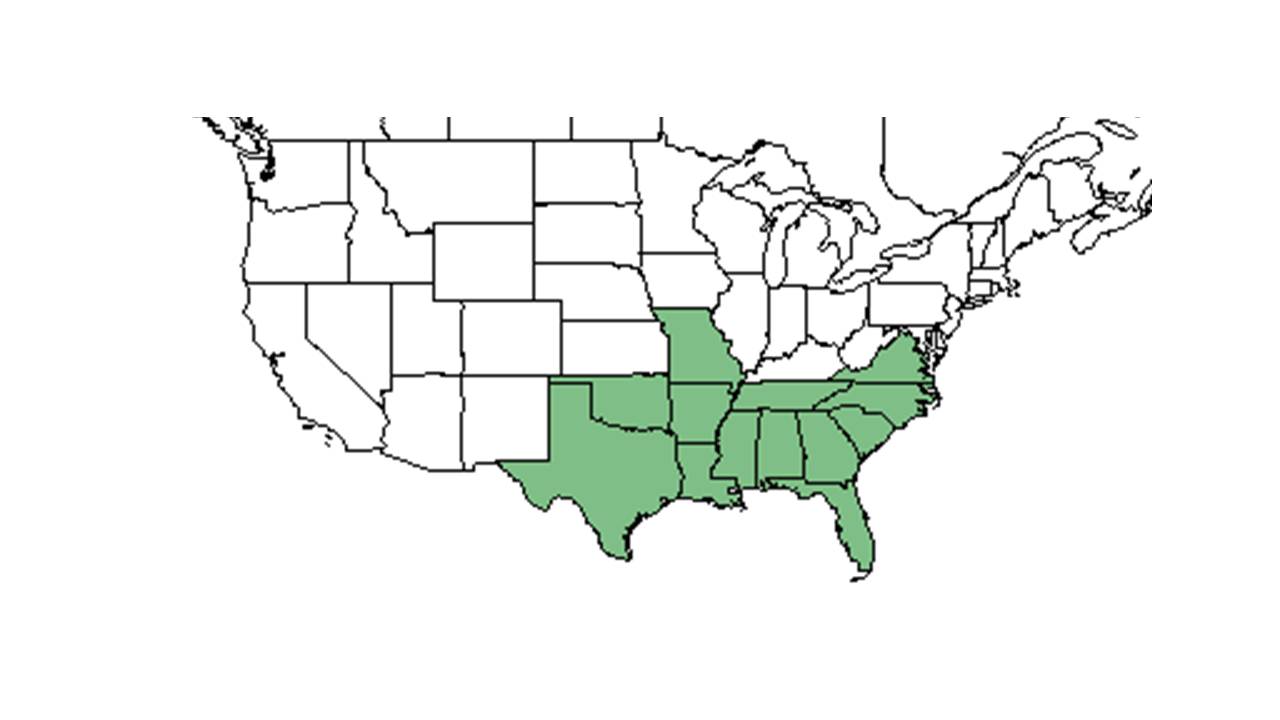Difference between revisions of "Paspalum bifidum"
| Line 24: | Line 24: | ||
==Ecology== | ==Ecology== | ||
===Habitat=== <!--Natural communities, human disturbed habitats, topography, hydrology, soils, light, fire regime requirements for removal of competition, etc.--> | ===Habitat=== <!--Natural communities, human disturbed habitats, topography, hydrology, soils, light, fire regime requirements for removal of competition, etc.--> | ||
| − | It was a selected plant in the Palustris Experimental Forest in central Lousiana – a representative of the lower coastal plain – second growth longleaf pine ( | + | This species can be found growing in longleaf pine-scrub oak sand ridges, sandhills, mixed woodlands, and open longleaf pine forests on rolling terrain (FSU Herbarium). It has been observed in dry loamy sands and moist hummus-rich soils in open areas (FSU Herbarium). ''P. bifidum'' can also grow in disturbed areas such as along dirt roads and bottomland clearings along rivers (FSU Herbarium). It was a selected plant in the Palustris Experimental Forest in central Lousiana – a representative of the lower coastal plain – second growth longleaf pine (Pearson et al. 1982). |
===Phenology=== <!--Timing off flowering, fruiting, seed dispersal, and environmental triggers. Cite PanFlora website if appropriate: http://www.gilnelson.com/PanFlora/ --> | ===Phenology=== <!--Timing off flowering, fruiting, seed dispersal, and environmental triggers. Cite PanFlora website if appropriate: http://www.gilnelson.com/PanFlora/ --> | ||
Revision as of 16:10, 20 July 2015
| Paspalum bifidum | |
|---|---|

| |
| Scientific classification | |
| Kingdom: | Plantae |
| Division: | Magnoliophyta - Flowering plants |
| Class: | Liliopsida – Monocotyledons |
| Order: | Cyperales |
| Family: | Poaceae ⁄ Gramineae |
| Genus: | Paspalum |
| Species: | P. bifidum |
| Binomial name | |
| Paspalum bifidum (Bertol.) Nash | |

| |
| Natural range of Paspalum bifidum from USDA NRCS Plants Database. | |
Contents
Description
Common name: pitchfork crowngrass
Distribution
Ecology
Habitat
This species can be found growing in longleaf pine-scrub oak sand ridges, sandhills, mixed woodlands, and open longleaf pine forests on rolling terrain (FSU Herbarium). It has been observed in dry loamy sands and moist hummus-rich soils in open areas (FSU Herbarium). P. bifidum can also grow in disturbed areas such as along dirt roads and bottomland clearings along rivers (FSU Herbarium). It was a selected plant in the Palustris Experimental Forest in central Lousiana – a representative of the lower coastal plain – second growth longleaf pine (Pearson et al. 1982).
Phenology
Seed dispersal
Seed bank and germination
Fire ecology
Pollination
Use by animals
Diseases and parasites
Conservation and Management
Cultivation and restoration
Photo Gallery
References and notes
Pearson, H. A., H. E. Grelen, et al. (1982). Botanical composition and nutritive value of cattle diets on southern pine range. New Orleans, LA, USDA Forest Service, Research Paper SO-178.: 24.